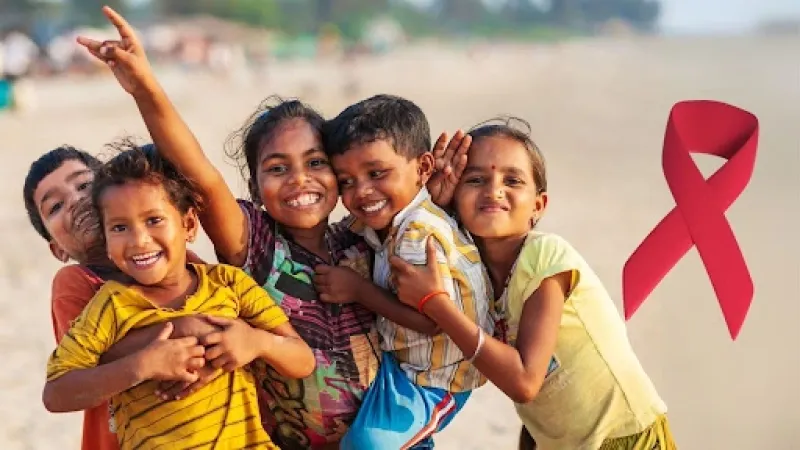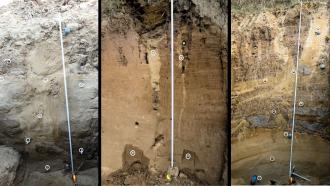
A cancer diagnosis can feel like a deathknell not just for the diagnosed individuals, but their families and friends. For adolescents and young adults (AYAs), navigating education, career, or societal relationships, a cancer diagnosis presents unique challenges, often disrupting crucial developmental stages. In many parts of the world, particularly in low and middle-income countries (LMICs), these challenges are compounded by limited resources and healthcare disparities. However, a recent decade-long study from India offers a powerful narrative of hope and innovation, showcasing how novel, cost-effective treatment protocols are transforming outcomes for young patients battling bone sarcomas.
Researchers from Homi Bhabha National Institute, Mumbai, focused on two primary types of bone sarcomas: osteosarcoma and Ewing sarcoma (ES). This comprehensive study was conducted as a prospective cohort, meaning researchers followed a specific group of patients over time to observe outcomes. They included adolescents and young adults aged 15 to 39 years who had histopathologically confirmed, high-grade bone sarcomas primarily in their extremities. All patients received uniform treatment at a leading tertiary care center in India, adhering to the OGS-12 and EFT-2001 protocols. Data was meticulously collected over several years, from November 2011 to January 2021 for osteosarcoma and from January 2013 to November 2018 for Ewing sarcoma.
The researchers gathered extensive information, including baseline demographic features, tumor characteristics, and nutritional parameters. They also documented treatment-related toxicities using standard criteria and assessed how well the tumors responded to chemotherapy by examining surgical specimens. To understand the broader impact of cancer, a uniform questionnaire was used during follow-up visits and telephone calls to gather insights into unique challenges faced by AYAs, such as job/school interruptions, relationship conflicts, fertility, and psychosocial health.
A key aspect of the study was evaluating the impact of the institutional KEVAT patient navigation system, initiated in 2018. This program aimed to guide patients through their treatment journey, provide logistic assistance, and counsel them on compliance, proving to be a vital support mechanism. Survival outcomes, including event-free survival (EFS) and overall survival (OS), were estimated using established statistical methods like the Kaplan-Meier method, and the influence of various factors on survival was analyzed using Cox proportional hazards analysis. This rigorous approach allowed for a comprehensive understanding of both clinical outcomes and the real-world experiences of these young patients.
Their study reveals that for patients with osteosarcoma that had not spread (nonmetastatic), the 5-year event-free survival (EFS) rate, meaning how long patients lived without the cancer returning or progressing, was an impressive 58.6%. Even for those with metastatic osteosarcoma, where the cancer had spread, the 5-year EFS rate reached 18.7%. Similarly, for nonmetastatic Ewing sarcoma, the 5-EFS rate stood at 66.4%, and for metastatic ES, it was 21.9%.
These survival rates are particularly significant because they were achieved using two specific, locally developed protocols: OGS-12 for osteosarcoma and EFT-2001 for Ewing sarcoma. These protocols are designed to be outpatient-based, sequential, dose-dense, and crucially, do not rely on high-dose methotrexate (HDMTX). This makes them more feasible and cost-effective in resource-constrained settings, directly addressing a major barrier to care in LMICs. The study also highlighted the critical role of treatment compliance; patients who completed their full treatment protocol experienced significantly better outcomes, underscoring the importance of adherence to the prescribed regimen.
Beyond the clinical survival rates, the study also looked into the broader impact of cancer on the lives of these young survivors. It revealed that a significant number of patients, over 90%, experienced interruptions in their jobs or schooling, highlighting the profound disruption cancer can cause to educational and career paths.
Fertility was another key area of investigation. While many female patients experienced menstrual irregularities post-chemotherapy, a large proportion (85.3% for osteosarcoma and 77.1% for ES) resumed regular menstruation within 12 months, offering a positive outlook for future family planning. However, the uptake of fertility preservation measures remained low, especially for females, often due to prohibitive costs and lack of awareness. Despite these challenges, many survivors went on to marry and conceive post-treatment, offering a hopeful perspective on life after cancer. Psychosocial burdens, such as anxiety and sleep disturbances, were also reported, though the researchers suggest these might be underreported due to societal taboos surrounding mental health.
This study is the largest consecutive cohort of AYA bone sarcoma patients treated uniformly with novel, dose-dense, cost-effective protocols in an LMIC setting, offering mature follow-up data. It's also the first from this region to report on the age of menarche in bone sarcoma patients and to provide detailed data on fertility, relationship conflicts, and marriage status post-treatment, shedding light on crucial survivorship issues. However, the study was a single-arm, non-randomised study, meaning there wasn't a control group receiving a different treatment for direct comparison, which is often tricky for rare cancers. There was also incomplete documentation of some survivorship issues, suggesting that the full psychosocial burden might be even greater than reported. These limitations mean that while the findings are highly encouraging and provide valuable real-world data, they should be interpreted within the context of a non-comparative design.
The research offers a testament to the potential for high-quality cancer care in LMICs. By demonstrating internationally comparable long-term outcomes with novel, locally adapted protocols, it provides a blueprint for improving access and efficacy of treatment for AYAs with bone sarcomas. Furthermore, the study's deep dive into the psychosocial challenges, from job and schooling interruptions to relationship conflicts and mental health concerns, highlights the urgent need for holistic care models. The work is a significant step towards ensuring that a cancer diagnosis in adolescence or young adulthood, even in resource-limited settings, does not mean an end to a fulfilling life.
This article was written with the help of generative AI and edited by an editor at Research Matters.






